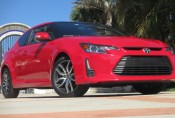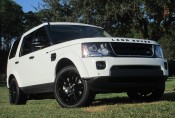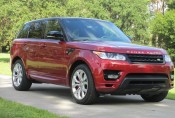2014 Mitsubishi Mirage – Video Review
With MPGs on everyone’s minds these days you could really see it coming; the 3-cylinder engine is back and it’s no mirage – or is it?
It’s easy to look at this car and immediately dismiss its relevance; sold from a company about which the American car shopper has long since forgotten, styling reminiscent of a late 90s Hyundai and a 74 horsepower output which doesn’t lend to bragging rights. Yet, after spending a week with Mitsu’s reboot of their smallest gas-powered car, the all-new 2014 Mirage, I came away pleasantly surprised. An advertised 40mpg combined ranks it higher than any of its non-hybrid competitors, the build quality is better than I would have imagined and it’s notably quick and nimble. Clever interior volume means even riding in the rear seats is a breeze with plenty of leg and headroom for adults, though it’s free of any kind of sculpting or armrests. And cargo room at 17 cubic feet is larger than that of a Ford Fiesta’s. It’s technically big enough to be considered a compact by the EPA which rates the gas mileage at 37mpg city/44mpg highway with the continuously variable transmission. Choose the 5-speed stick shift and you’ll save $1,000 but lose 3mpg. This CVT is actually quite good at maximizing what the 1.2-liter engine is offering, containing technology that automatically selects the optimal gear ratio based on road and driving conditions. As expected the Mirage drives with more power and finesse in its intended venue – around the town, city-type driving – though it can still climb a country hill without traffic mounting behind it. The one situation that’s out of its comfort zone is highway travel where the front stabilizer bar doesn’t do enough to keep the Mirage from feeling a bit twitchy at higher speeds. But I’d say in 90% of driving situations the Mirage is quite adept, with affable electric steering, a fairly supple ride on its tiny 14” tires, and ABS brakes with drums in the rear which have a confident touch and organic feel. It weighs only 2,051 pounds – so shedding excess has been taken seriously here. The less agreeable 10% of its character is on display when you hammer the accelerator – mainly during a highway merging scenario where so much unusual sound is created it’s hard to distinguish between the anguished CVT, strained MIVEC engine system and oddly deep exhaust. It’s loud in a way I’ve never quite heard before.
The base Mitsubishi Mirage DE starts at under $14,000 while this well-equipped ES with CVT and the optional navigation package with rear view camera stickers for $16,890. This car has fast key entry with access from the driver’s side and hatch with a start button placed cumbersomely on the left behind the stalk. There’s also automatic climate control, cruise control, stereo controls on the wheel and a Bluetooth system that unfortunately doesn’t incorporate voice commands. The navi system itself is very good however and feels like the most expensive part of the entire car. It’s just too bad the 4 cheap speakers don’t translate the sound. A general lack of stuff-it space needs fixing, too. The funky fabric design and palette of attention grabbing colors should appeal to the Mirage’s intended audience but the car’s body? It just screams poor and that’s something Ford and Chevy have learned to remedy in their subcompacts.
Built in Thailand and going head-to-head with the Fiesta 1.0-liter 3-cylinder, the Mirage gets better city mileage and doesn’t have to be ordered with a manual transmission like the Ford. All told the Mirage is more proficient than it looks and is perhaps Mitsu’s most keenly focused vehicle.

 2015 SCION tC QUICK TAKES
2015 SCION tC QUICK TAKES 2014 LAND ROVER LR4 QUICK TAKES
2014 LAND ROVER LR4 QUICK TAKES 2014 RANGE ROVER SPORT QUICK TAKES
2014 RANGE ROVER SPORT QUICK TAKES